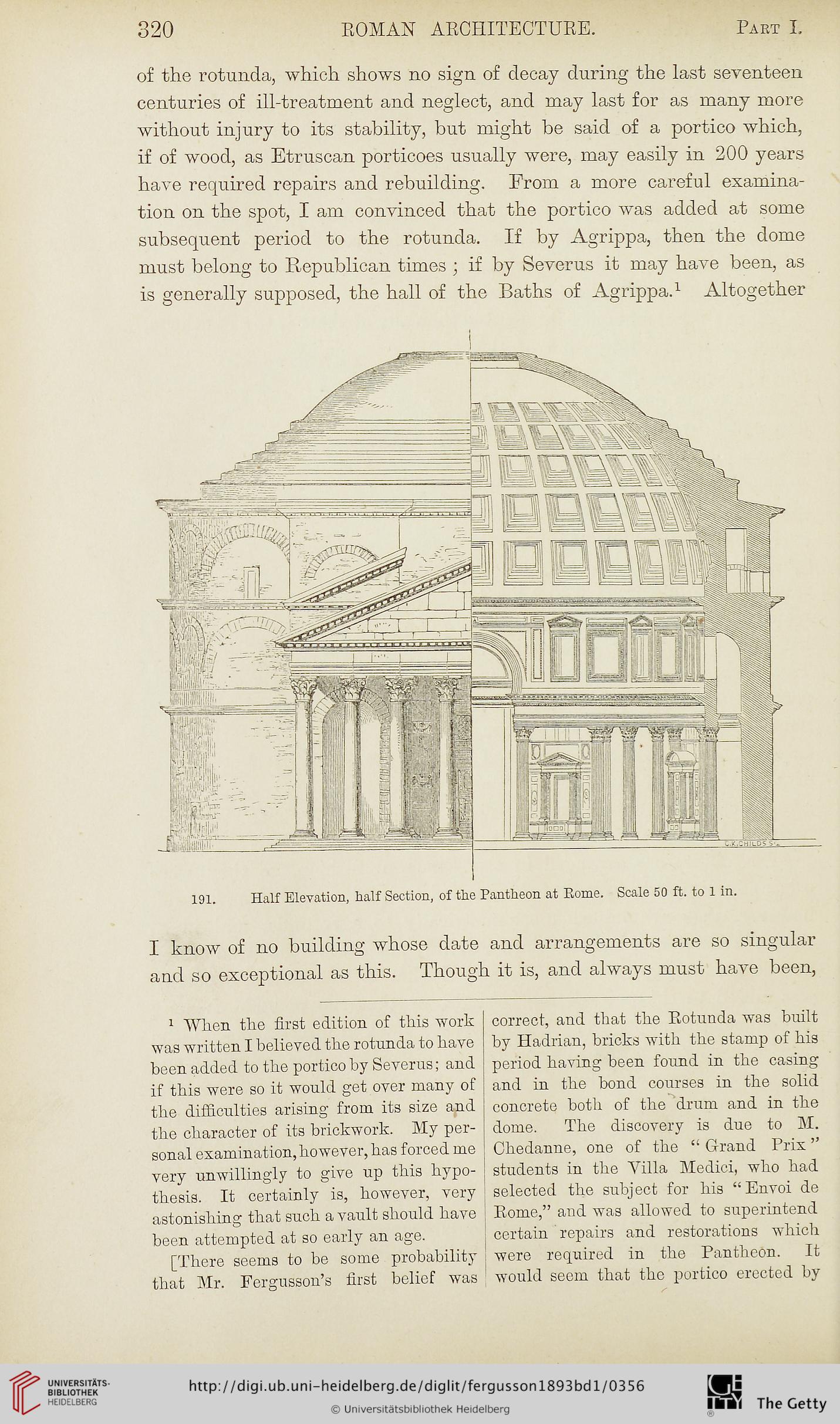320
ROMAN ARCHITECTURE.
Part I,
of the rotunda, which shows no sign of decay during the last seventeen
centuries of ill-treatment and neglect, and may last for as many more
without injury to its stability, but might be said of a portico which,
if of wood, as Etruscan porticoes usually were, may easily in 200 years
have required repairs and rebuilding. Prom a more careful examina-
tion on the spot, I am convinced that the portico was added at some
subsequent period to the rotunda. If by Agrippa, then the dome
must belong to Rnpublican times ; if by Severus it may have been, as
is generally supposed, the hall of the Baths of Agrippa.1 Altogether
I know of no building whose date ancl arrangements are so singular
and so exceptional as this. Though it is, and always must have been,
1 Wken tke first edition of tlnis work
was written I believed tlie rotunda to bave
been added to tlre porticoby Severus; and
if this were so it would get over rnany of
the difficulties arising from its size and
the character of its brickwork. My per-
sonal exainination,liowever, has forced me
very unwillingly to give up this hypo-
thesis. It certainly is, however, very
astonishing that such a vault should have
been attempted at so early an age.
[There seems to be some probability
that Mr. Fergusson’s first belief was
correct, and that the Rotunda was built
by Hadrian, bricks with the stamp of his
period having been found in the casing
and in the bond courses in the solid
concrete both of the drum and in the
dome. The discovery is due to M.
Chedanne, one of the “ Grand Prix ”
students in the Villa Medici, who had
selected the subject for his “Envoi de
Rome,” and was allowed to superintend
certain repairs and restorations which
were recpuired in the Pantheon. It
would seem that the portico erected by
ROMAN ARCHITECTURE.
Part I,
of the rotunda, which shows no sign of decay during the last seventeen
centuries of ill-treatment and neglect, and may last for as many more
without injury to its stability, but might be said of a portico which,
if of wood, as Etruscan porticoes usually were, may easily in 200 years
have required repairs and rebuilding. Prom a more careful examina-
tion on the spot, I am convinced that the portico was added at some
subsequent period to the rotunda. If by Agrippa, then the dome
must belong to Rnpublican times ; if by Severus it may have been, as
is generally supposed, the hall of the Baths of Agrippa.1 Altogether
I know of no building whose date ancl arrangements are so singular
and so exceptional as this. Though it is, and always must have been,
1 Wken tke first edition of tlnis work
was written I believed tlie rotunda to bave
been added to tlre porticoby Severus; and
if this were so it would get over rnany of
the difficulties arising from its size and
the character of its brickwork. My per-
sonal exainination,liowever, has forced me
very unwillingly to give up this hypo-
thesis. It certainly is, however, very
astonishing that such a vault should have
been attempted at so early an age.
[There seems to be some probability
that Mr. Fergusson’s first belief was
correct, and that the Rotunda was built
by Hadrian, bricks with the stamp of his
period having been found in the casing
and in the bond courses in the solid
concrete both of the drum and in the
dome. The discovery is due to M.
Chedanne, one of the “ Grand Prix ”
students in the Villa Medici, who had
selected the subject for his “Envoi de
Rome,” and was allowed to superintend
certain repairs and restorations which
were recpuired in the Pantheon. It
would seem that the portico erected by




